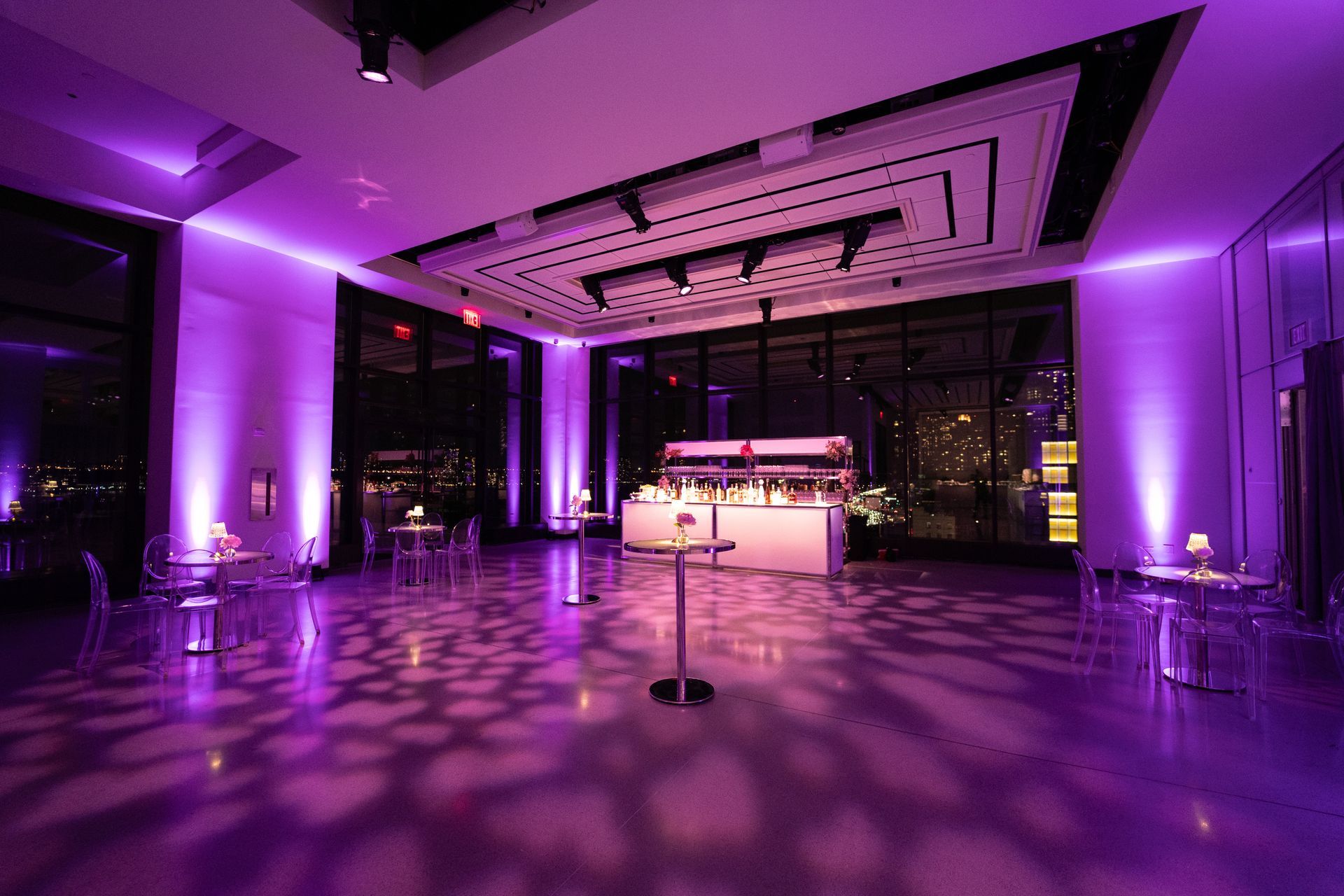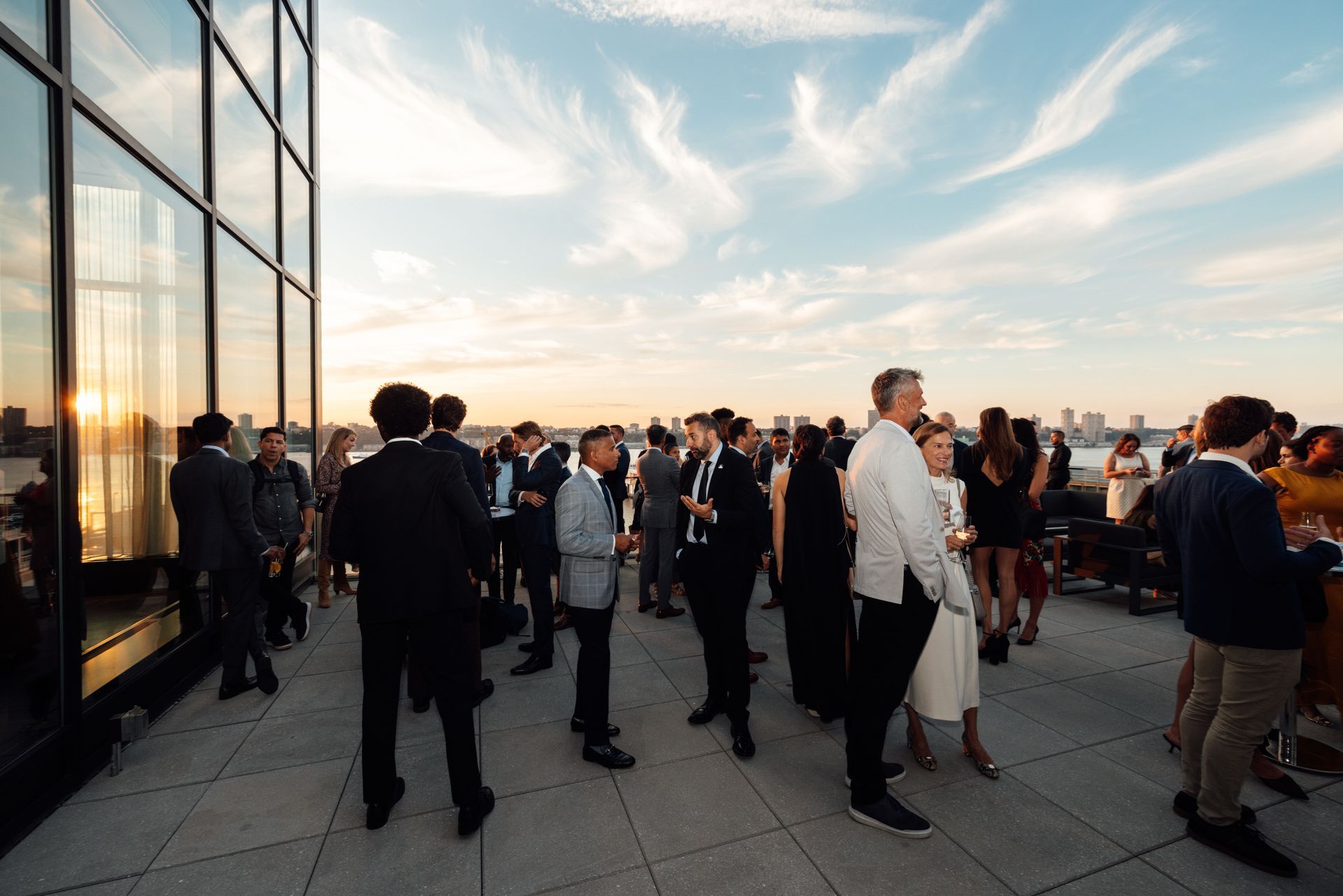Event Design Evolution Throughout the Ages
By summer of 1919 the Spanish Flu epidemic had subsided.
After over a year of wearing masks and being cooped up in their homes, Americans were itching to get out and party. But that’s about where its similarities with our current circumstances end, for now. The 1920s were steeped in excess, postwar giddiness fueling gilded debauchery and illegal drinking; a carefree time eventually called Roaring. But over here in the 2020s we’re a bit more cautious about what the future holds, especially in events and when considering event design.
We propose a more accurate comparison.
The heady Roaring ‘20s could be likened to the ethos of the 1980s, a consumerist Bonfire of the Vanities era where overconsumption was en vogue. The 1920s loved a theme party; the 80s loved their aesthetics. (The 1920s also loved things suspended in aspic. Some trends… don’t age so well.) “In the eighties the biggest thing was that people wanted an atmosphere,” says Joan Steinberg of caterer Sonnier & Castle . “But an atmosphere could be, let’s make everything red silk. It was more about color, and vibe.” Food was less about nutrition and provenance, and more about contributing to the décor. “Let’s say a makeup designer was introducing a new lip color collection, and the lip colors were based on flowers,” says Steinberg. “They would want things in the food that would tie in with the overall color palate.”
Parties were venue-driven and event design followed.
Partygoers and party throwers-alike clamored to be first in the new, hot space, continuing this clamoring well into the mid-2000s. “One of the big things was to be first at something. The something was generally a space that people hadn’t been at before,” says Steinberg. “A new gallery, a new museum, or a club.”

Clubs were in high demand for corporate and PR-focused events, generally because they held a massive amount of people. With built-in sound systems, clubs were especially useful if you wanted to hire talent. “Prince, Donna Summer, the Beach Boys, they all performed. You had sound, you had lights, you had cavernous space. You had venues that the average person couldn’t usually get into on their own, either because they were prohibitive with their lists or the door, or it was so expensive that the average 20 year old couldn’t afford to go. So if you got invited to a private event at a place like that, you were an A-lister for the night.”
Enter the experiential event.
The move towards experiential events came as Manhattan ran out of new spaces to see and be seen. “Even in New York, which is maybe the hippest city in the world, it’s still a small town. You have X amount of venues that people can go to, and you can only reinvent them in so many different ways,” says Steinberg. “Event design is still restricted by walls and ceilings and floors and entrances. Over the past ten to 15 years, it’s more about creating a once-in-a-lifetime experience that never existed before. It’s not necessarily about being at a certain trendy spot.”
With the advent of social media there’s a new facet to consider in event design.
Today the “experience” also incorporates photography and social media, ensuring the event lives on long after it’s over. “The first thing clients ask for is an Instagrammable moment” says Steinberg. “So instead of florals just being a centerpiece or signage just being informational, one of the things you’re charged with is “What’s the Instagram shot?”

Designer Allison Winn Butler of Allison Butler Creative also notes how the reach of social media influences event design. “Obviously aesthetics are always important, but in the last several years, especially with all of the social media outlets, and how everyone is constantly sharing experiences on social, it has become so important. Whereas before you wanted to make sure you have a lovely menu and pretty flowers and amazing food, now it’s really about creating these iconic looks and these designs.”
She’s learned the mantra “more is more,” adjusting event design for the gaze of the phone camera. “My design aesthetic is simple, modern and clean. I very quickly realized that that shows up as blah at night and with event lighting,” she says. “I think one thing that has happened and will stay is that everything is going to be a little extra. You’re going to have that bright, bold tablecloth. You’re going to use more saturated colors, and I don’t think that’s going to change.”
Get ready to see more individualized design.
“Everyone loves little, and everyone loves their own personalized thing. Individualized servings started out like “oh, this is cute, this is fun,” and now I think it’s going to switch to that out of necessity.”
Grazing tables will be put on hold for now, with a move towards attendants doing the serving. “Years ago there were buffet attendants, so someone was always serving you. And over the years it’s become much more of a self-service thing, which is what individuals want. They want to get what they want, however much they want,” says Butler. “I think as a result of the pandemic we’re going to see more individual setups or people serving the individuals. Even with so many people vaccinated. I just think people are so much more cautious now.”
Event design will be flexible.
Take this summer’s Central Park hat luncheon, the first major gala on the charity circuit to return. Rather than the usual one party under a massive tent, it was broken up into several spaces in the park, over the course of two days. Micro weddings will be favored, and the design of spaces themselves will incorporate segmentation, a natural next step from the wristbands designating comfort level that were prevalent earlier in the pandemic.
“There was an article in Architectural Digest I believe that was talking about how even flooring and carpets and rugs are going to be used to designate areas and the flow of traffic,” says Butler. “And a lot of rental companies do that now. They’ll almost create zones, if you will, utilizing design in a fun way to direct people and make it as safe and seamless as possible.”
With so much still uncertain, flexibility is optimal.
And there’s no space more flexible than The Glasshouse . “People have been thinking about events completely differently,” says Glasshouses partner, Jack Guttman. “We’ve gone very quickly going from talking about the size of the space and how many people we can host to the flexibility that we offer in terms of space.”

An event that would ideally be for a thousand people could easily be adjusted to five hundred, just by moving a partition. And the views would be just as spectacular. And if the actual attendees are only 250 because of safety concerns or changing vaccination requirements, that’s no problem either.
“To have a space like ours where yes, we have a massive amount of space, but the way that we can curate our mobile partition system and doors to preserve the views or to be opaque, that offers a lot of comfort to the customer who isn’t exactly sure whether what the events in Q4 of 2021 are going to look like,” says Guttman. “So if we have 250 people we have a great solution at The Glasshouse. If we grow to 500 or 1,000 people we have a great solution at The Glasshouse.” Not to mention the venue’s many attractive features such as a highly sophisticated audiovisual system and unique amenities such as outdoor and ancillary spaces to provide guests with a variety of experiences within a single venue.
Our outlook may not be exactly the Roaring 2020s.
But we’ll get there, with flexibility and creativity. “My sense of what happened in the 1920s was, they repealed Prohibition, the depression was over, everyone went out and danced and drank,” says Steinberg. “There’s some of that, but it’s not that kind of an easy seismic shift. I think it’s got to be a little bit more thought out to justify what they’re doing. It’s going to be a gentle incline.”
Having said that, anybody who gets an invitation is excited. We miss the party invites, we miss the first look opportunities. We miss the opening-night events. They signify everything that’s great about New York.”
The post Event Design Evolution Throughout the Ages appeared first on Glasshouses.
More stories from
The Glasshouse




